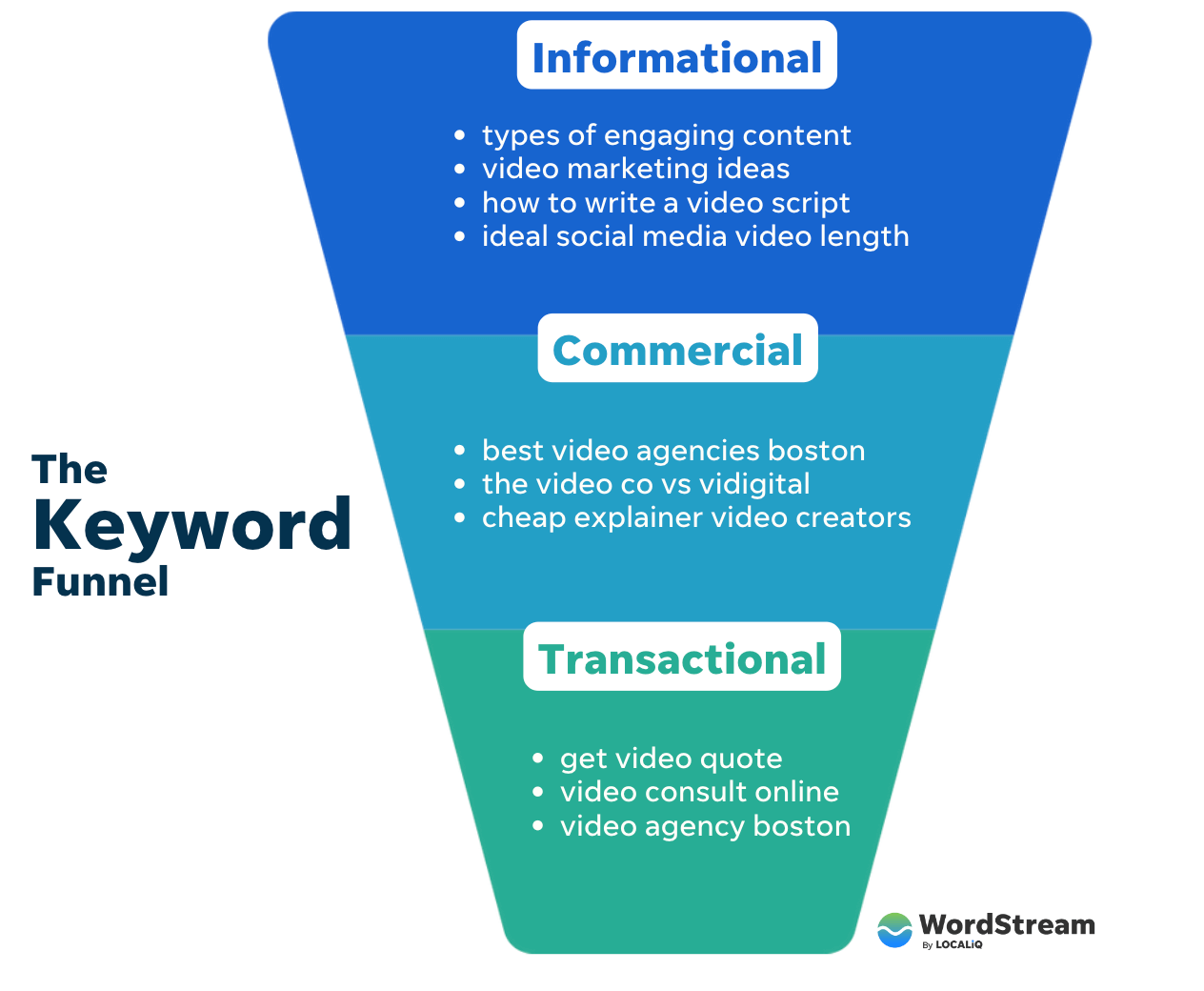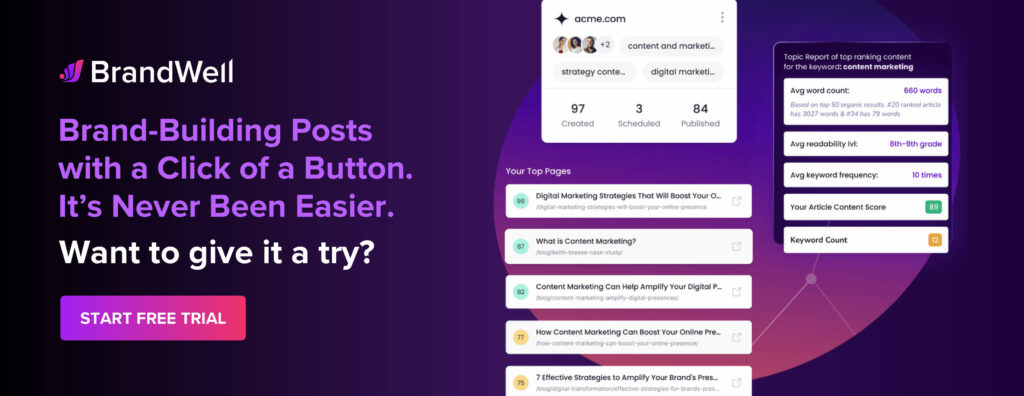Discover top guides, trends, tips and expertise from AIO Writers
Boost Your Rankings with Smart Keyword Optimization
Julia McCoy
Tuesday, 9th Apr 2024
Ever wondered why some websites seem to effortlessly climb the search engine ranks? The secret often lies in keyword optimization. It’s not just about stuffing your content with as many keywords as possible; it’s a craft, a blend of art and science. Whether you’re polishing that first blog post or fine-tuning evergreen content, understanding this can transform your approach.
Keyword optimization bridges the gap between user queries and the solutions or information you provide. But there’s a twist – doing it right requires finesse. It’s like finding the perfect balance on a seesaw; too much on one side and things don’t work as they should.
Let’s break down the nitty-gritty details of keyword optimization — its impact on search rankings and how you can boost the performance of your online content with keyword optimization tools.
Table Of Contents:
- What Is Keyword Optimization and Why Is It Important?
- How to Conduct Effective Keyword Research
- How to Optimize Content With Targeted Keywords
- Mapping Keywords to the Customer Journey
- Tracking and Measuring Keyword Performance
- Advanced Keyword Optimization Strategies
- Common Keyword Optimization Mistakes to Avoid
- FAQs – Keyword Optimization
- Conclusion
What Is Keyword Optimization and Why Is It Important?
Keyword optimization is the secret sauce to getting your content found by the right people at the right time. It’s all about understanding what your target audience is searching for and then making sure your content includes those magic words and phrases.
At its core, keyword optimization involves researching, analyzing, and selecting the best keywords to target for your content. This process helps you understand the language your audience uses when searching for topics related to your business or industry.
Think of it like a matchmaking service for your website and potential customers. By optimizing your content with the right keywords, you’re increasing the chances of a genuine connection.
Benefits of Keyword Optimization
So why bother with keyword optimization? Well, let me count the ways:
- Increased visibility in search engine results pages (SERPs)
- Attracting qualified traffic to your website
- Improved relevance and user engagement
- Higher conversion rates and ROI
In short, keyword optimization helps search engines understand what your content is all about so they can recommend it to people who are actively searching for it. It’s a win-win.
How Keyword Optimization Impacts Search Engine Rankings
Search engines like Google use complex algorithms to determine which pages to show for a given search query. One of the key factors they consider is the presence and relevance of keywords.
By strategically incorporating target keywords into your content, you’re sending a clear signal to search engines about the topic and focus of your page. This helps them better understand and categorize your content, which can lead to higher rankings for relevant searches.
How to Conduct Effective Keyword Research
Keyword research is the foundation of any successful optimization strategy. How do you find those crucial keywords?
Step 1: Identify Your Target Audience and Search Intent
Before you start brainstorming keywords, it’s crucial to have a clear understanding of your target audience.
Who are they? What are their pain points, interests, and goals? What type of language do they use?
You’ll also want to consider the search intent behind their queries.
Are they looking for information, solutions, or to make a purchase?
Answering these questions will help guide your keyword research and ensure you’re targeting the right terms.
Step 2: Use Keyword Research Tools
While you can certainly brainstorm keywords on your own, using research tools can help you uncover valuable insights and generate new ideas. Some popular options include:
- Google Keyword Planner
- Moz Keyword Explorer
- Semrush Keyword Magic Tool
- Ubersuggest
These tools can provide data on search volume, competition level, related keywords, and more. Use them to build out a master list of potential target keywords.
The RankWell long-form SEO writer also includes an in-app keyword research tool that lets you find important keywords and turn them into long-form, SEO-optimized blog posts instantly.
The keyword research report shows the monthly search volume, ranking difficulty, cost per click, and trends for each key phrase:
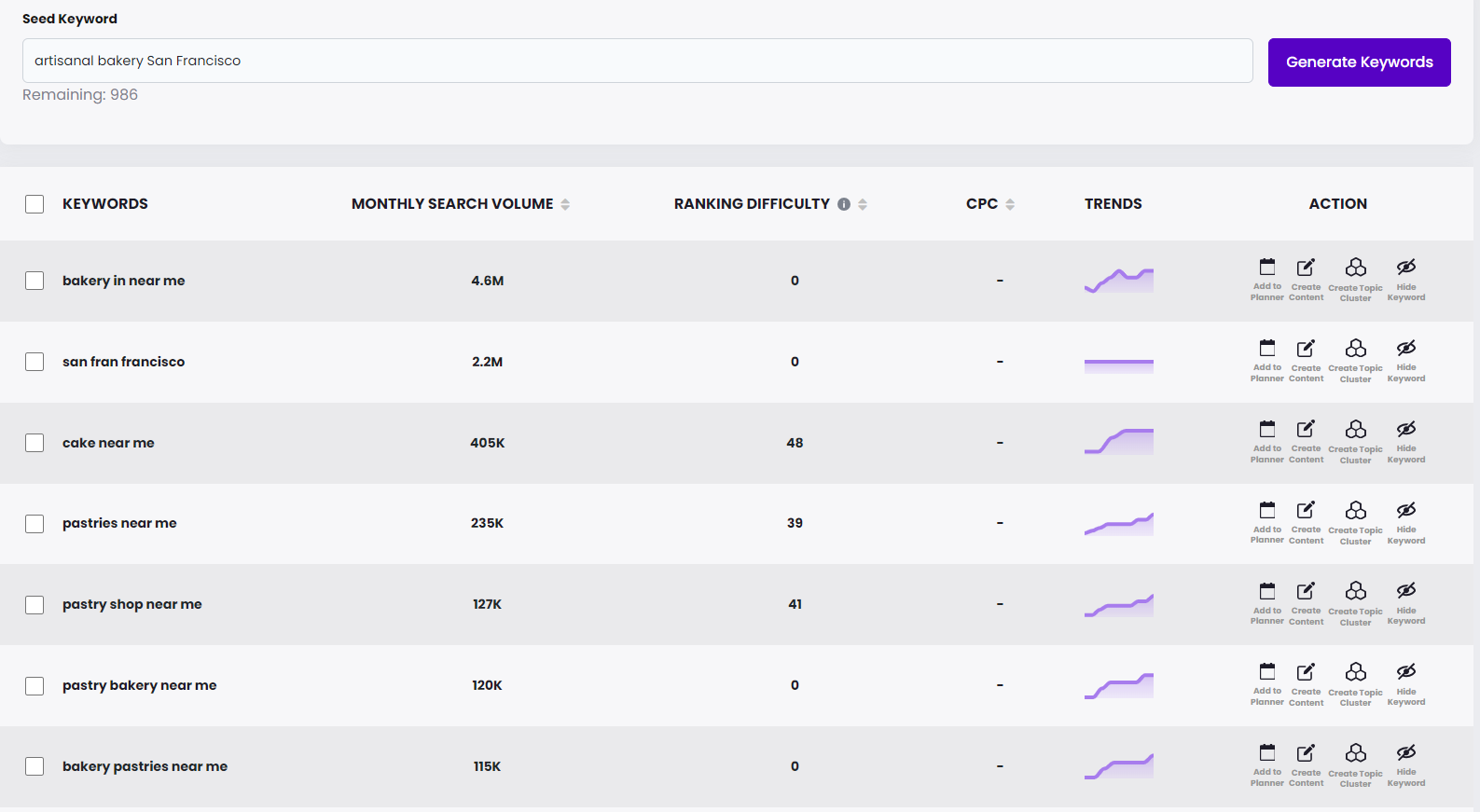
Step 3: Analyze Competitor Keywords
In addition to using keyword tools, it can be incredibly valuable to analyze the keywords your competitors are targeting. By understanding what’s working for them, you can identify gaps and opportunities for your own content.
Tools like SpyFu and Similarweb can provide insights into your competitors’ top keywords, as well as their estimated search traffic and rankings. Use this intel to inform your own keyword strategy.
Step 4: Select the Right Keywords to Target
Once you have a robust list of keyword ideas, it’s time to narrow it down and prioritize which search terms to focus on. Some factors to consider include:
- Relevance to your content and business
- Search volume and popularity
- Competition level and ranking difficulty
- Alignment with user search intent
Aim for a mix of high-volume, competitive keywords as well as longer-tail, niche keywords that may be easier to rank for. The key is to select keywords that will drive qualified traffic to your site.
How to Optimize Content With Targeted Keywords
Congrats, you’ve done the hard work of researching and selecting your target keywords! Now it’s time to put them into action with on-page optimization techniques.
Add Keywords to Title Tags and Meta Descriptions
Your title tag and meta description are like the billboard and tagline for your content in SERPs. Make sure to include your primary keyword in both, while still keeping them compelling and click-worthy.
For example, instead of a generic title like “10 Tips for Better Sleep,” try something more specific and keyword-rich like “10 Proven Tips for Overcoming Insomnia and Getting Better Sleep.”
See the difference?
Add Keywords to Headings and Subheadings
In addition to your title tag, it’s important to use keywords in headings and subheadings. This not only helps break up your text and make it more scannable, but it also sends strong signals to search engines about the topic of your page.
Aim to include your primary keyword in your H1 heading, and then sprinkle variations and related LSI keywords in H2s and H3s.
But again, don’t force it. Use keywords only where they naturally fit.
Mention Keywords Naturally Throughout The Content
Speaking of natural, that’s exactly how you want to incorporate keywords throughout your content. Focus on writing for your human readers first, and then go back and optimize for search engines second.
Use your target keywords and variations in the body copy, but only where they make sense and flow naturally. If you find yourself struggling to fit a keyword in, it’s probably not the right fit for that piece of content.
💡With RankWell, you can skip all of these steps because the app will automatically do it for you. Each long-form blog post generated by RankWell will already have your keywords embedded into the URL slug, title, meta description, H2-H3 headers, and the introduction and conclusion.
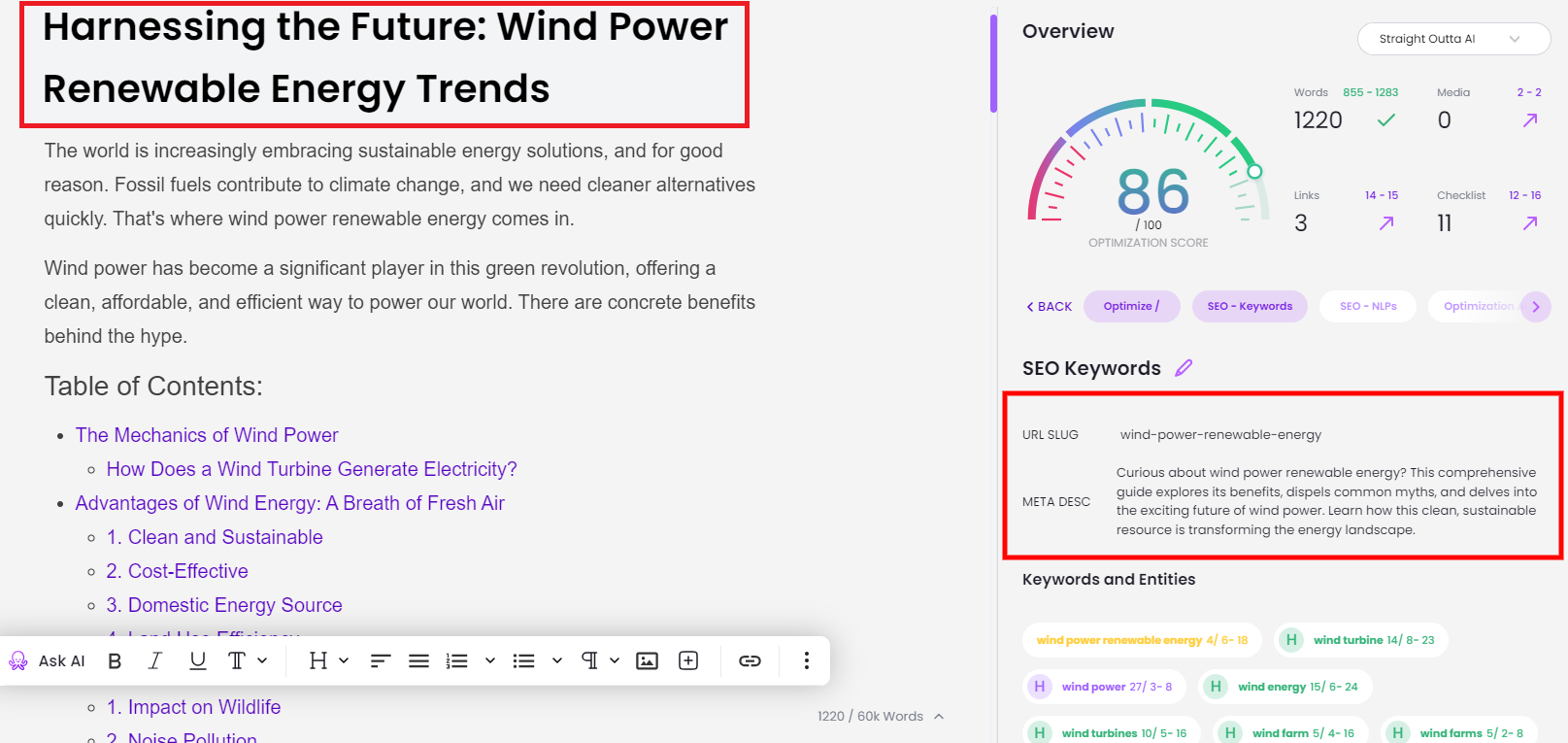
Plus, you get a full suite of SEO tools to help guide you in your keyword optimization efforts. The right sidebar displays your current SEO score, word count, and the number of multimedia elements and links in your blog post. Scroll down a little further and you’ll see a list of keywords and entities that are color-coded:
- Green means the keyword is optimized
- Yellow means you can work it in a few more times
- Red means you have not mentioned the keyword at all
- Purple means you may be guilty of keyword stuffing!
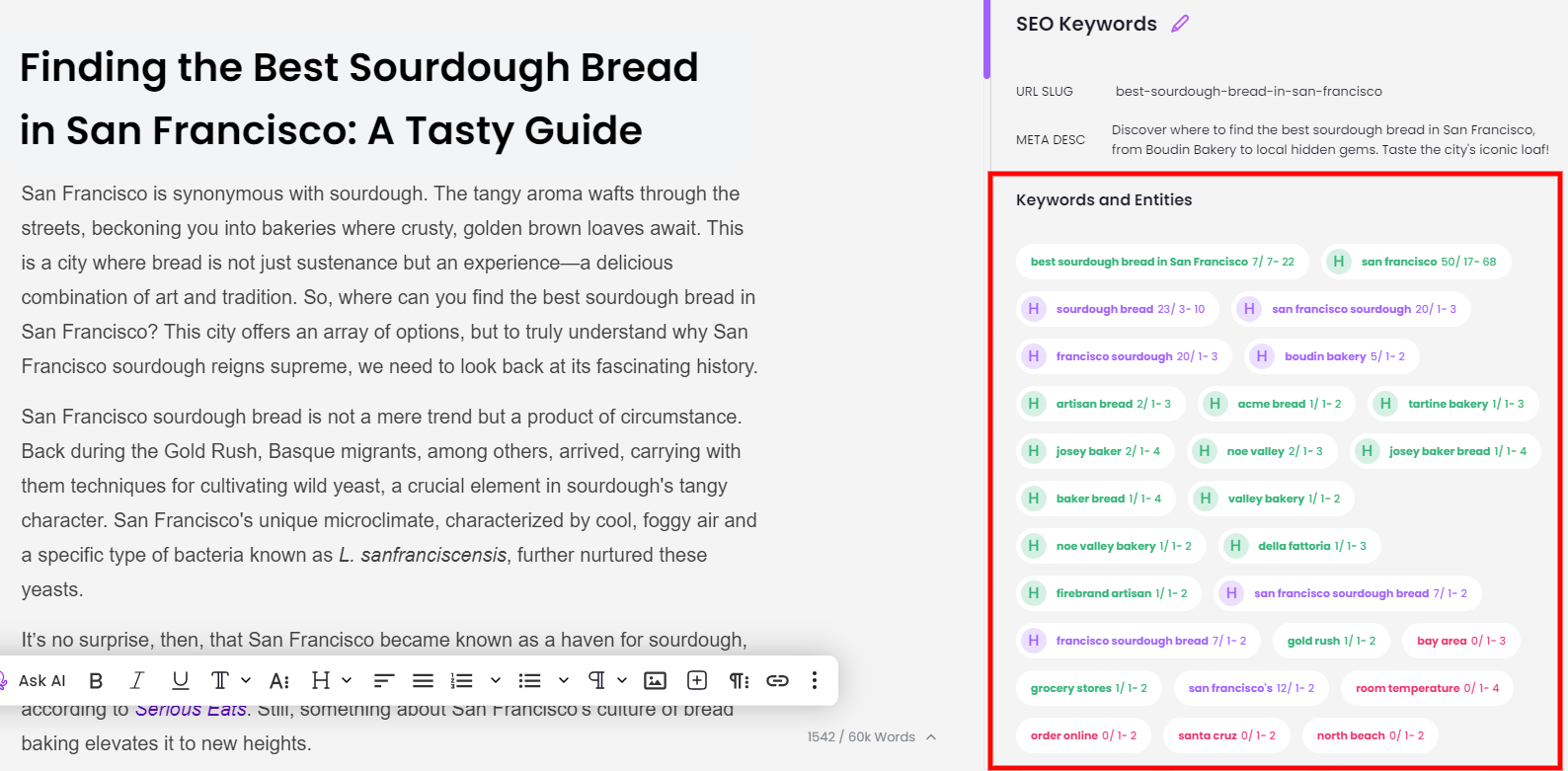
Scroll your mouse over each keyword and you’ll find more keyword insights such as these:
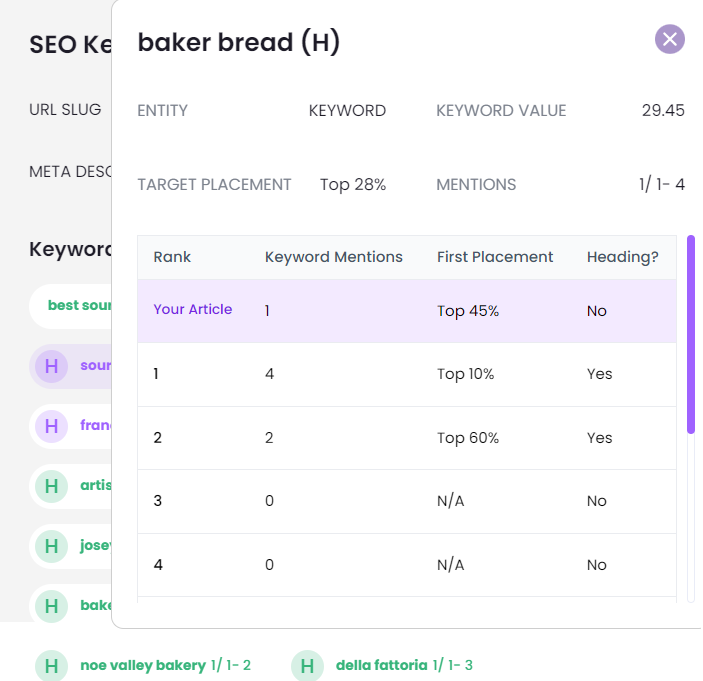
Here you can see how each keyword was used by your Top 5 competitors — allowing you to adjust your own keyword optimization strategy.
Optimize Images with Alt Text
Don’t forget about optimizing your images. Search engines can’t “see” images the way humans can, so they rely on image alt text to understand what the image is about.
When writing alt text, be descriptive and include your target keyword if relevant. For example, instead of just “dog,” you might say “Golden Retriever puppy playing fetch in the park.” This helps both search engines and visually impaired users better understand your content.
Mapping Keywords to the Customer Journey
As you optimize your content, it’s important to keep the bigger picture in mind. Keyword optimization isn’t just about ranking for individual terms – it’s about meeting your audience where they are in their customer journey.
Research Keywords for Each Stage of the Funnel
Different keywords will be relevant at different stages of the marketing funnel. For example, someone just starting to research a problem will use different search terms than someone ready to make a purchase.
Map out the typical journey your customers take, and identify keywords that align with each stage. This might include:
- Awareness stage: Informational keywords related to their pain points or challenges
- Consideration stage: Commercial keywords comparing different solutions or providers
- Decision stage: Bottom-of-funnel transactional keywords indicating a readiness to buy
Align Content with Search Intent
In addition to mapping keywords to the funnel, it’s crucial to align your content with the search intent behind each keyword. What type of content are users expecting to find when they search for that term?
For example, a keyword like “what is [topic]” indicates that the user is looking for informational content, while “[product] reviews” suggests they are in the consideration stage and looking for comparisons or opinions.
By matching your content to the search intent, you’ll not only rank better but also provide a better user experience and drive more qualified traffic.
Tracking and Measuring Keyword Performance
You’ve done your research and optimized your content, and now it’s time to see how your efforts are paying off. Tracking and measuring your keyword performance is crucial to the success of your SEO strategy.
But where do you start? Let’s break it down:
Set Up Keyword Tracking
First things first, you need to set up keyword tracking. There are plenty of tools out there like Moz and Semrush that can help you keep an eye on your keyword rankings.
These tools will show you where your keywords are ranking in the search results and how they’re performing over time. This data is gold when it comes to measuring the success of your SEO keyword optimization.
Analyze Keyword Rankings and Traffic
Once you have your tracking set up, it’s time to dive into the data.
Look at your keyword rankings and see how they’ve changed over time. Are they moving up? Holding steady? Dropping?
But rankings aren’t everything. You also want to look at the traffic those keywords are bringing in. Check your click-through rates and see how many people are actually clicking through to your site. If your rankings are high but your traffic is low, it might be time to rethink your strategy.
Find Opportunities for Improvement
As you analyze your data, keep an eye out for opportunities to improve. Maybe there are some long-tail keywords you’re not targeting yet. Or maybe you need to optimize your meta descriptions to boost those click-through rates.
Don’t be afraid to experiment and try new things. The beauty of tracking your keyword performance is that you can see what’s working and what’s not, and adjust accordingly.
Adjust Your Keyword Strategy Based on Results
Speaking of adjusting, that’s exactly what you should be doing based on your results. If a keyword isn’t performing well, don’t be afraid to ditch it and try something new.
On the flip side, if a keyword is killing it, double down on that success. Create topic clusters around that topic and see if you can rank even higher.
The key is to stay flexible and be willing to adapt your strategy as needed. With the right tracking and analysis, you’ll be able to make data-driven decisions that take your SEO marketing to the next level.
Advanced Keyword Optimization Strategies
You’ve got the basics down, but now it’s time to level up your keyword game. These advanced strategies will help you take your optimization to the next level and really dominate those search results.
Leverage Long-Tail Keywords
Long-tail keywords are more specific, niche keywords that might not have a ton of search volume, but they’re much easier to rank for.
Plus, the people searching for these keywords are usually further along in the buying process, so they’re more likely to convert.
Build Topical Authority with Keyword Clusters
Keyword clusters are groups of related keywords that all revolve around a central topic. By targeting these clusters, you can build topical authority and show search engines that you’re an expert in your field.
This not only helps with rankings but also makes your site more valuable to users. They’ll see you as a go-to resource for all things related to your niche.
Optimize for Featured Snippets and Voice Search
Featured snippets and voice searches are becoming increasingly important in the world of SEO. By optimizing your content for these features, you can snag those coveted “position zero” spots in SERPs and get your content in front of even more people.
To do this, focus on creating concise, clear answers to common questions in your niche. Use header tags and bullet points to break up your content and make it easy for search engines to parse.
And don’t forget about voice search. Use natural, conversational language and long-tail keywords to make sure your content is optimized for those verbal queries.
Common Keyword Optimization Mistakes to Avoid
Even the most seasoned SEO pros can fall victim to these common keyword optimization mistakes. But fear not. We’re here to help you steer clear of these pitfalls and keep your strategy on track.
Keyword Stuffing and Over-Optimization
Repeat after me: more is not always better. Stuffing your content with keywords might seem like a good idea, but it’s actually a big no-no in the eyes of search engines.
Not only does it make your content read like a robot wrote it, but it can also get you penalized by Google. Stick to a natural keyword density and focus on creating valuable, readable content.
Neglecting Long-Tail Keywords
I know we just talked about the power of long-tail keywords, but it bears repeating. Neglecting these niche keywords is a huge missed opportunity.
Sure, they might not have the search volume of those short-tail keywords, but they’re much easier to rank for and can bring in highly targeted traffic. Don’t sleep on the long tail.
Ignoring Search Intent
Search intent is the reason behind a user’s search query. Are they looking to buy something? Learn more about a topic? Find a specific website?
If your content doesn’t match the search intent behind your target keywords, you’re going to have a hard time ranking. Make sure you’re creating content that actually answers the questions your users are asking.
Focusing on Vanity Metrics
It’s easy to get caught up in vanity metrics like rankings and traffic. But at the end of the day, those numbers don’t mean much if they’re not translating into actual business results.
Instead of obsessing over your rankings, focus on metrics that actually matter, like conversions and revenue. Those are the numbers that will really move the needle for your business.
By avoiding these common mistakes and focusing on creating valuable, optimized content, you’ll be well on your way to SEO success.
FAQs – Keyword Optimization
How do I optimize my search keywords?
Pick words your audience uses. Mix in popular and niche terms. Use tools like Google Keyword Planner for insight.
How do you optimize keyword performance?
Analyze rankings regularly. Update content to keep it fresh and relevant. Adjust strategies based on what the data shows.
What is an SEO optimization strategy?
A plan focusing on improving site visibility in search results through quality content, backlinks, and keyword use.
What is the difference between SEO and keywords?
SEO involves a broader set of tactics for ranking higher online, while keywords are specific phrases targeted within those tactics.
Conclusion
Keyword optimization isn’t merely tossing words onto a webpage but crafting messages that resonate deeply with both search engines and human readers alike. Remember, successful SEO is less about gaming search engines and more about enhancing real human experiences — making every click count towards something valuable.
So let this guide inspire action! Refine those articles, tweak those titles, optimize images — all steps forward in mastering keyword optimization without falling prey to common pitfalls along the way.

UNLOCK YOUR POTENTIAL
Long Headline that highlights Value Proposition of Lead Magnet
Grab a front row seat to our video masterclasses, interviews, case studies, tutorials, and guides.

